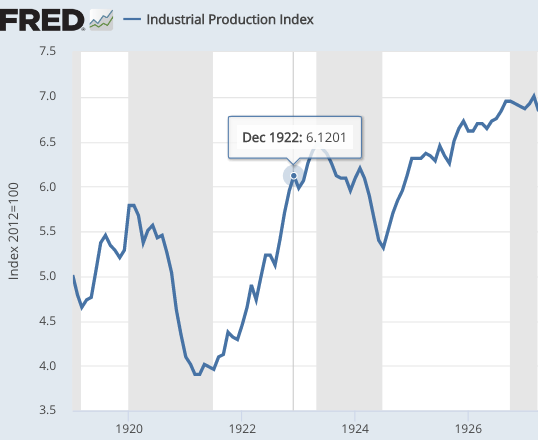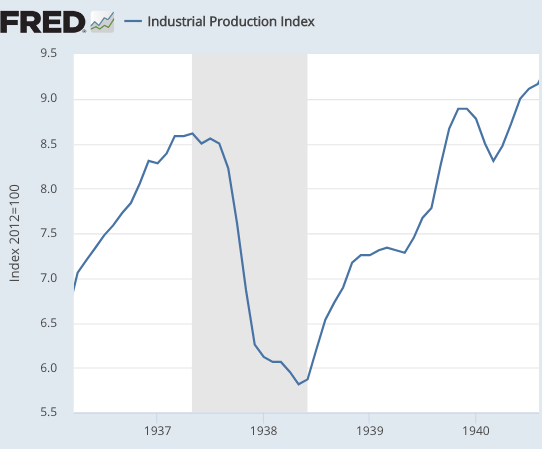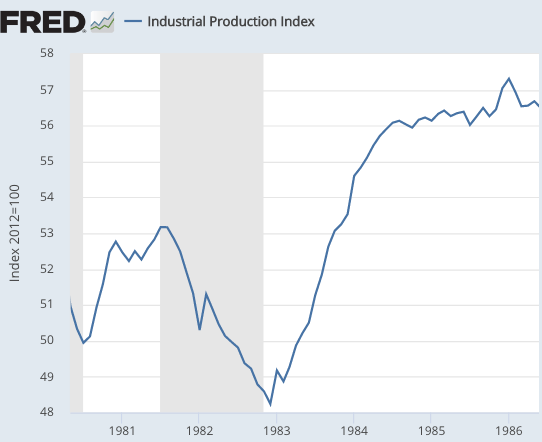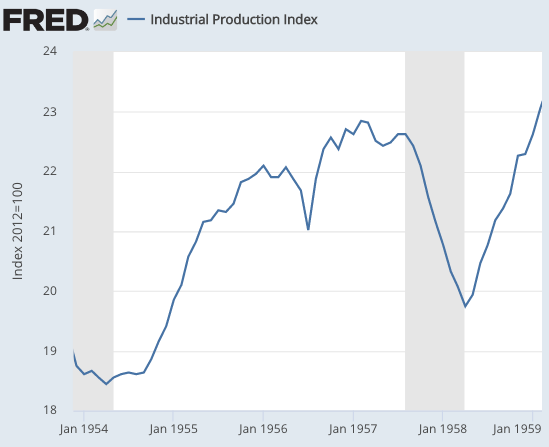Build The NGDP And Businesses Will Come With The Goods And Services
This recession may well end up being worse than the Great Recession. But it probably doesn’t have to be:
1. The recession will certainly be deeper than the Great Recession, indeed it probably already is.But deeper doesn’t mean worse.
2. The recession may have to be worse than the Great Recession if the medical situation turns out to be far worse than I expect.
3.However, if the medical situation turns out to be about as I expect, then we could have economic growth in the second half of 2020, and full employment in 2022.
I say, “could have” because it will also depend on monetary policy.
In my view, the most likely medical outcome is a sharp reduction in new caseloads in May. There will also be improvements in PPE for workers and lifestyle changes will persist. This will allow some (but not all) businesses to begin reopening, starting in May. Then, sometime in 2021, we will likely have a vaccine or drug treatment or vastly improved PPE, or some combination that allows for a more normal economy. I’m not certain this optimistic scenario will be correct, but I suspect something will turn up, given the enormous pressure to solve the problem. So I believe it’s more than 50% likely.
The point of this post is not to give you my worthless predictions on the coronavirus, rather to point to some misconceptions I see in the media. One theme is that it may be difficult for the economy to recover once the medical crisis is over because firms have gone bankrupt. Nonsense.
US economic history is full of examples of explosively fast recoveries when the initial problem is no longer impacting the economy, and even when it is (as in March-July 1933, a period when much of the banking system was shut down.)A good example is the extremely fast 1921-22 recovery. In July 1921, we were at the bottom of a very deep recession, and by December 1922 we were booming—“the Roaring 20s”. How about having an extremely fast 2021-22 recovery!

The 1921-22 recovery was aided by a great deal of wage flexibility, more than we have today. But we have the advantage of a fiat money system and hence can print enough money to get NGDP back up to the trend line by 2022. We don’t need wage flexibility. And we certainly don’t want a repeat of the needlessly anemic recovery from then 2008-09 slump.
I cannot emphasize enough that in the absence of a shutdown for medical reasons, our economy is capable of rapidly returning to full unemployment if the Fed provides adequate NGDP. Recall the movie line, “build it and they will come”.I’d say, “Build the NGDP and businesses will come with the goods and services.”
Don’t believe the pessimism; we should expect and indeed demand that the Fed provides adequate NGDP once the epidemic is over. If the economy is not at full employment in early 2022, it will likely be because NGDP is not 8% above 2020:Q1 levels, not because of mythical “hysteresis”.
Jay Powell seems to have his heart in the right place:
Jay Powell said the Federal Reserve would use its powers “forcefully, proactively and aggressively” until the economy recovers from the coronavirus shock, as the US central bank moved to offer an extra $2.3tn in credit and support the market for high-yield corporate debt.
But good intentions are not enough; we need level targeting, announced ASAP.
PS.Bonus prediction: This summer the media will begin dividing countries up into safe and infected categories. The safe category will include Australia and New Zealand, China, Taiwan, Vietnam, Iceland, and a few others. Soon South Korea, Hong Kong, and Norway will join the list, and then gradually more and more countries. By “safe” I mean community transmission of less than 2 cases per week. There will be a lot of chatter in the media about how to move from the infected to the safe category, and a lot of political disagreement on the topic.
PPS. In the US, the epidemic began in western states. Today, the epidemic is dramatically worse in states east of the Texas/Louisiana border, even accounting for population.
Update: Just as France was hit much harder than Northern Europe, Quebec is being hit much harder than the rest of Canada. Then there’s Louisiana . . .
PPPS.The recovery from mid-1938 to late-1939 was also very rapid, despite a pause after minimum wages were enacted in the fall of 1938:

Or how about the rapid recovery during 1983:

Or how about 1958:





My nearby family has been housebound 4 weeks. We have masks but can't get everything online like they can. The fear of human contact is simply something the Fed cannot fight with v shaped success.